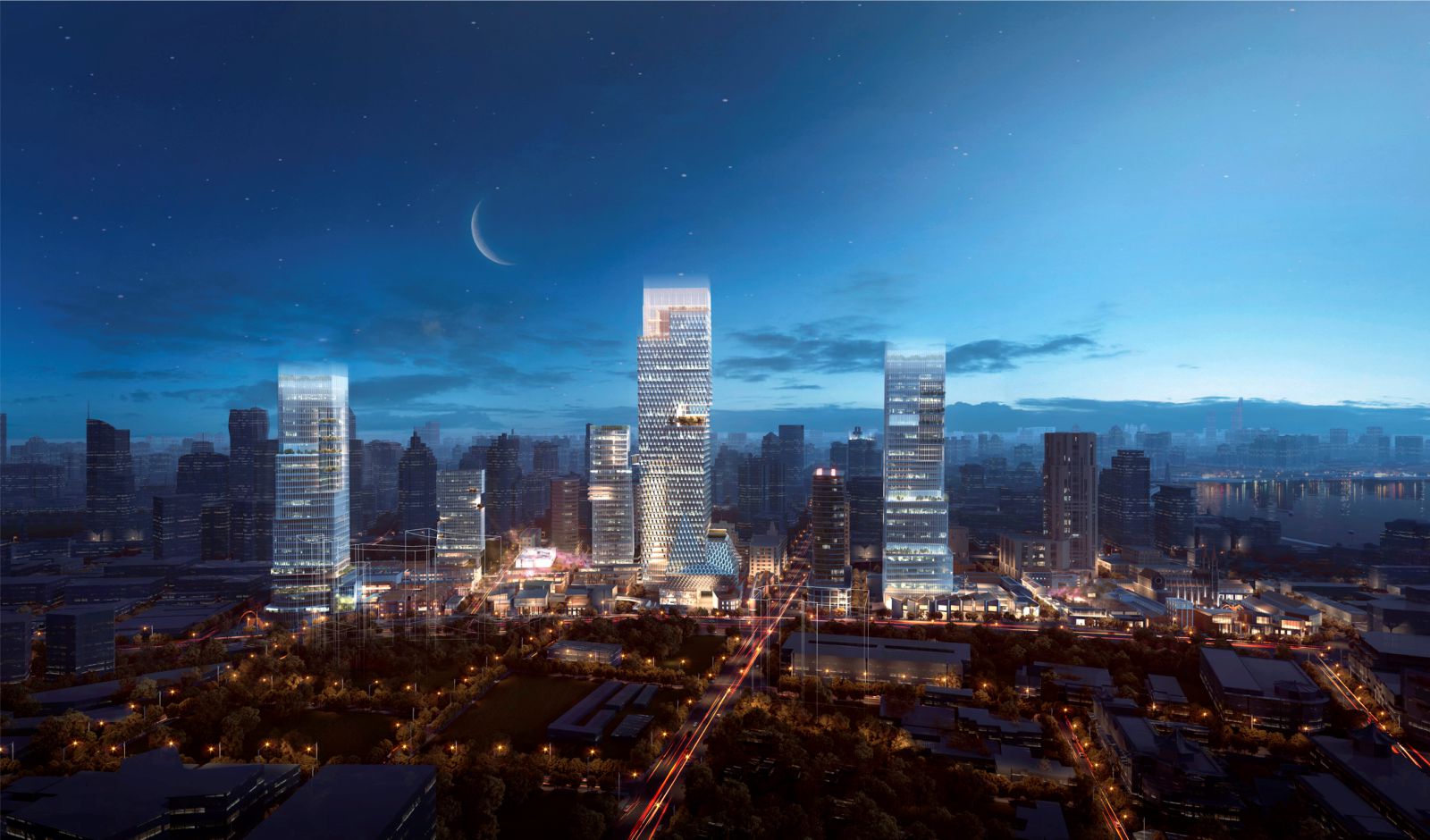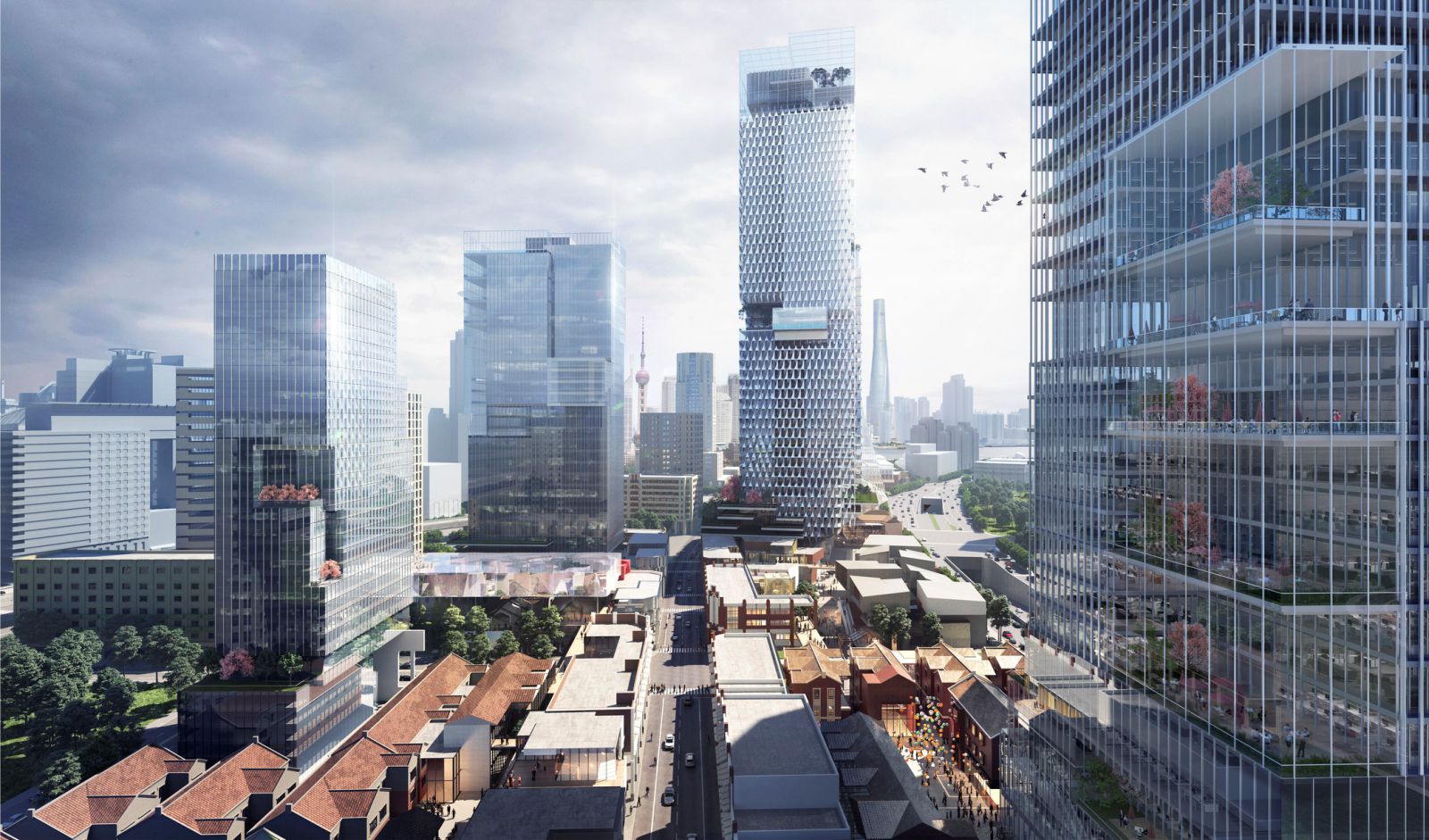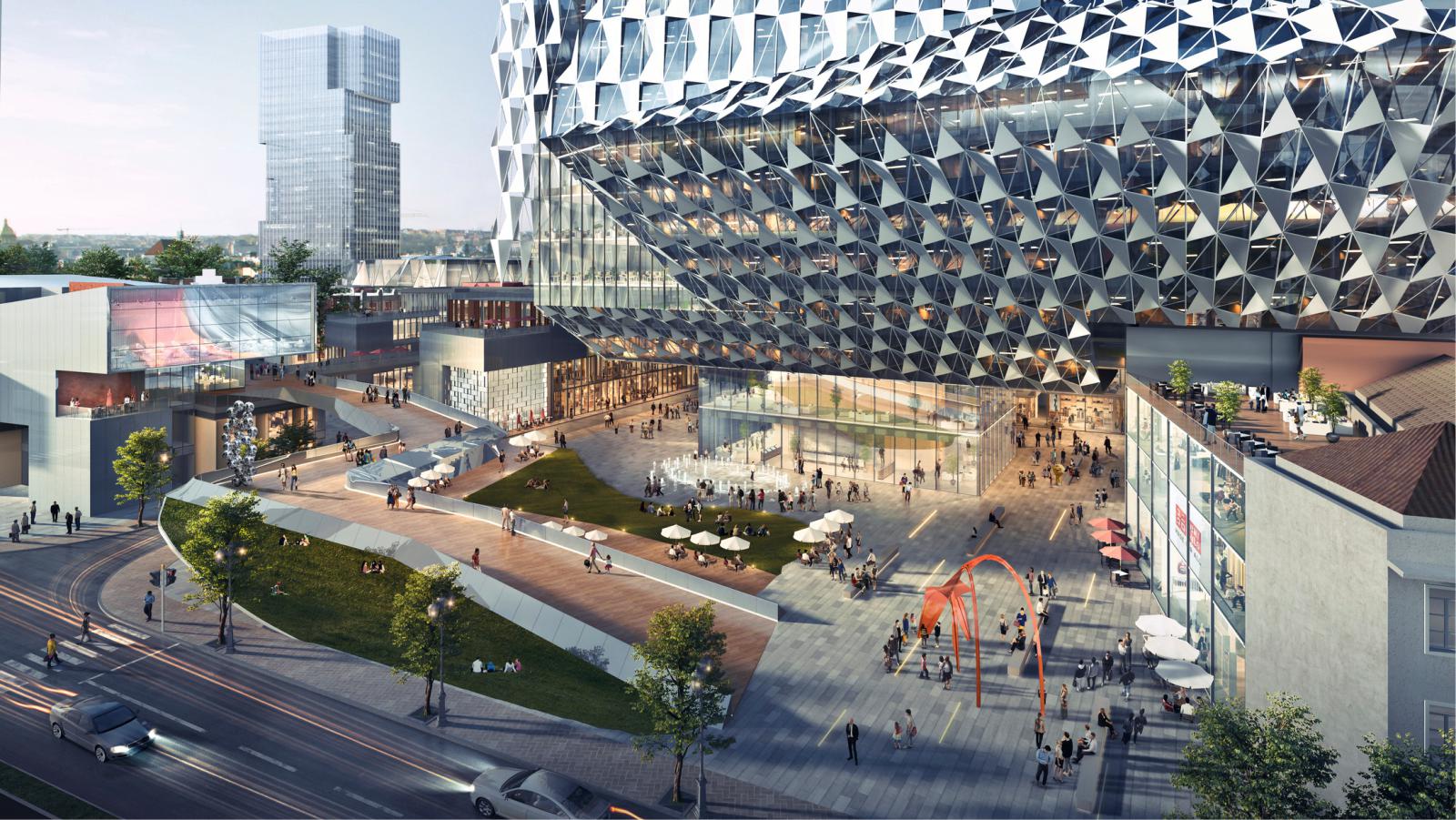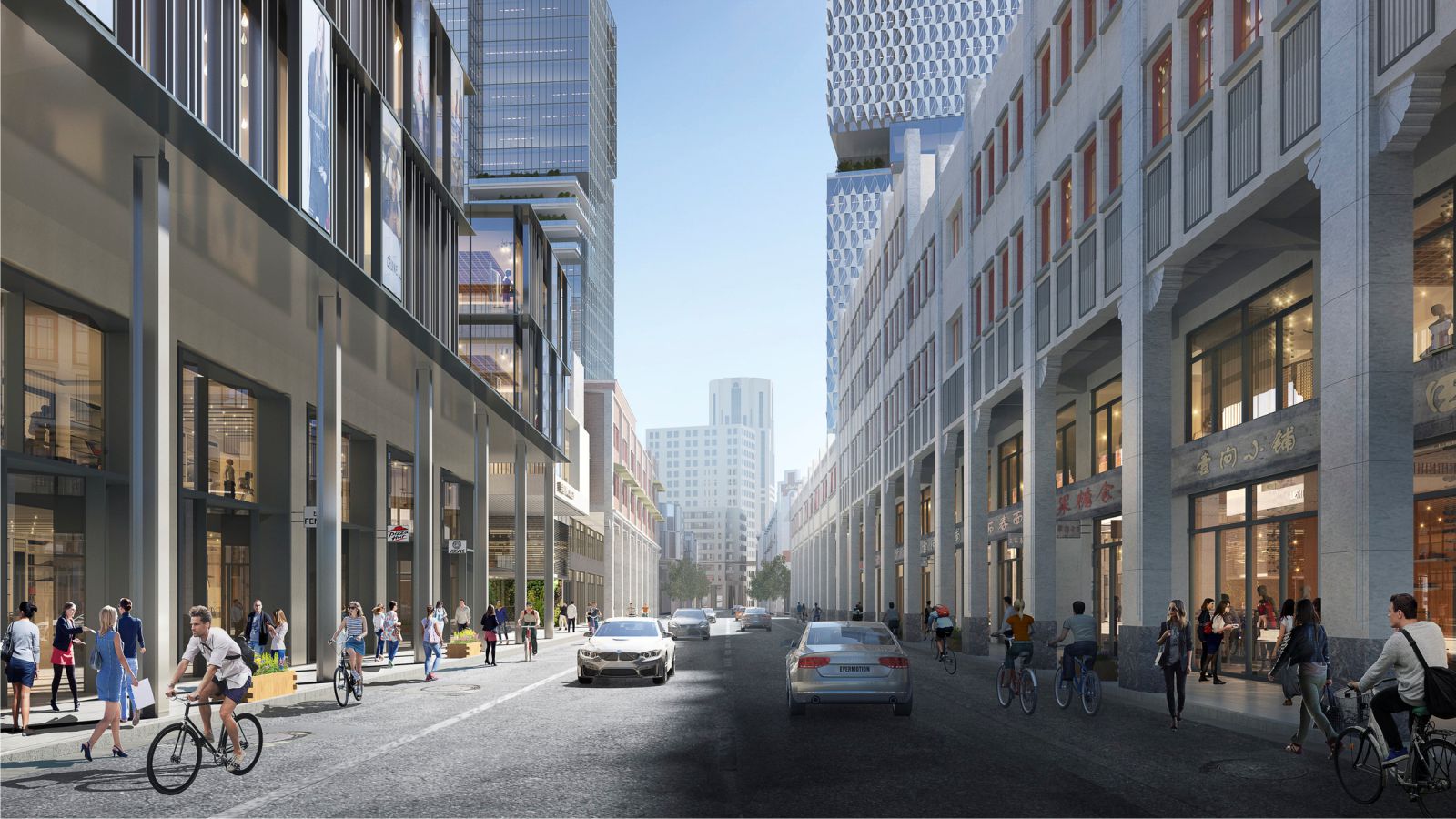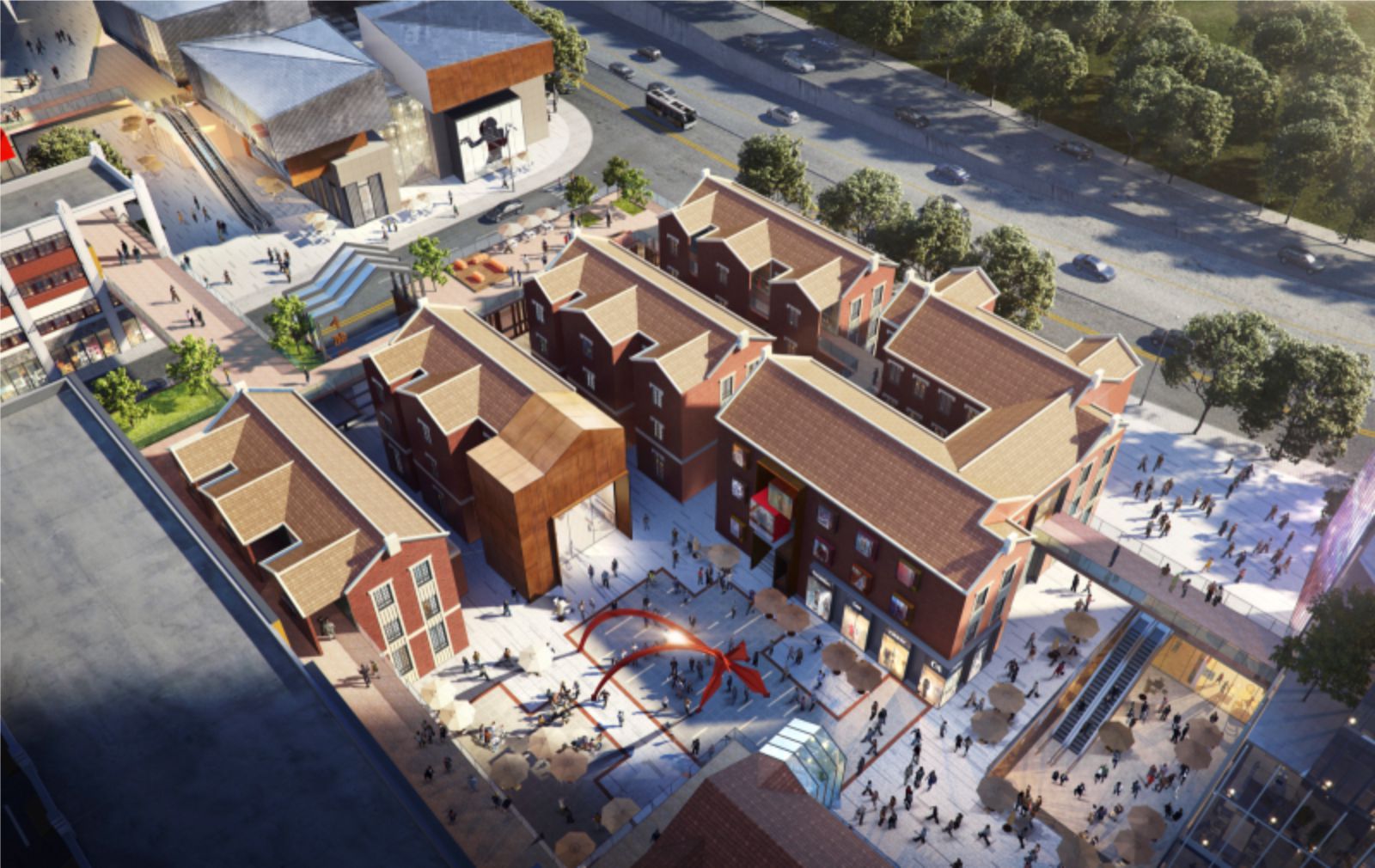Throughout history, the cities in which humans live have either actively shaped, or been passively altered by, people’s lifestyles. Cities change every day, and urban renewal is a constantly ongoing process. Faced with increasing land resource shortages for urban development, first-tier world-class cities such as Shanghai (ranked Alpha+ according to GaWC 2018) face an urgent need to switch from ‘incremental expansion’ to ‘tapping of reserves’.
Benoy has been researching this area since 2017 and, at the request of various business owners, has successively redefined the urban regeneration of 10 key sites in the Jinling East Road area. The aim has been to give the old town area a new vitality, new structure, new industries and a new appearance to better serve modern urban needs. The Jinling East Road area lies in the heart of Shanghai, spanning the two major areas of People’s Square and the Bund within Huangpu District, covering a total of ten neighbourhoods. It is bordered by three protected areas: People’s Square, the Bund and the Old City.
The Shanghai municipal government designates the portion of Jinling Road covered by the project an historical district, together with the nearby neighbourhoods and streets. The area is adjacent to the Bund and looks out over the Huangpu River. It is criss-crossed by a range of public transportation routes, and is served by Shanghai Metro lines 10 and 14. The local history, culture, setting, transportation and other resources provide the project area with many unique advantages. And it is precisely because of these advantages that all planning, design and development must respect and protect the spatial texture, streets and lanes, historical buildings and public environment of the area as a whole.
The project must also upgrade the overall area in line with its expected future growth and development. The Benoy team’s design programme is based on an ‘urban forest’ concept. The cities we rely on for survival have all developed from nothing, expanding in size and sophistication. Our cities can be likened to sustainable forests that grow dynamically every day. The development of an ‘urban forest’ is to a certain degree organically derived from ‘self-growth’. Its adaptation to different periods, sustainable urban regeneration, history and culture, is crucially important to the city scale.
Benoy has expounded this ‘urban forest’ theme, in which modern man survives and cohabitates, on three levels: mixed character, sticky space, and three-dimensional networks. In terms of urban character, Jinling Road is entirely different from its surrounding areas — Xintiandi with its nineteenth-century character, the Old City of Yuyuan Garden, and even the public face of the Shanghai-style foreign concessions, the Bund. Jinling East Road is known as the birthplace of the former French Concession, and is a Shanghai-style arcaded street that embodies the collective memories of generations.
In other words, the closer you get to the emotional connection Shanghai has with its people, the closer you get to the spark of fire that makes the city so special. In terms of its commercial function, the Benoy team used local history and stories to develop a unique ‘mixed character’ for the area, leveraging modern design and operational methods to create an exquisite, elegant, and fashionable new urban landmark. This incorporates five separate themes: Local Lane Memories, Shanghai Style, Boutique Hotel Art Gallery, Style and Art Area, and Fashion Variety Block.
Local Lane Memories
Local Lane Memories preserves the scale and warmth of home-lined lanes, retaining the sense of community and vibrancy of street life. Shops whose history and popularity are local features will be retained, undergoing sensitive upgrade. This will enable an assortment of commercial and dining outlets to coexist with elements of community culture and life, such as libraries, galleries and exhibitions, outdoor cinemas and community centres. These developments will revive the entire area from the bottom up in this, Shanghai’s ‘first neighbourhood’.
Shanghai Style
Shanghai Style is an updated pedestrian area with modern-day standards and a sense of fashion. It constitutes a renewal and regeneration of Shanghai’s arcades, retaining time-honoured Shanghai brands and new-concept flagship stores. It also incorporates brand and product showrooms for goods made in Shanghai and the rest of China. Shanghai Style breathes new life into once-charming shopping streets; at the same time, the architectural language on both sides juxtaposes history and modernity, such that pedestrians passing along the street are caught in a journey between past and present.
Style and Art Area
In the Style and Art Area, historical buildings are transformed into hubs for art and high-end lifestyles, while structures with their own stories to tell will be transformed into venues for top art institutions. The area introduces a variety of high-end and exclusive restaurants, bars, private clubs and lifestyle brands. It also creates a private, bespoke art and lifestyle area that showcases elegance and taste.
Fashion Variety Block
The Fashion Variety Block is a fashionable yet comfortably scaled neighbourhood in the heart of the Shikumen community. It surrounds the cathedral to form a neighbourhood full of distinctive historical architectural features. Combining retail boutiques, leisure venues, lively restaurants and bars, plus creative and co-working spaces, it creates a warm and dynamic environment for business and consumers. The development of the project area embodies our business development strategy, New Financing for the Old City, which aims to attract increased volumes of foreign investment and new finance businesses.

Image © Benoy
This positioning is also based on our interpretation of the industrial development system in the Huangpu District’s 13th Five-Year Plan, and the central phase of the Bund financial cluster. The orientation of the area’s industrial planning tends to favour the development of new finance, core areas and emerging service industries. A preliminary screening will focus on the area’s industrial foundations and compliance with the industrial plan. A secondary screening will focus on business development outlook and resources.
In the future, this project will form a ‘1+4’ high-end service business system with pan-finance at its core, supplemented by four major industries: professional services, commercial trade, culture and tourism, and Big Health. An overall improvement in software and hardware will help to enhance the future quality and urban positioning of the project. Not only is the implantation of content required, but the axes of the three-dimensional spatial form also need to be extended during reconstruction. Because the site is an area of historical and cultural significance, the existing road layout and underground space is narrow and constrained.
Strengthening surface links and creating a three-dimensional network was the most important consideration during the architectural design phase, and was incorporated into the concept from the beginning. The foundations of the existing public transport routes favour the development of a future TOD strategy. Metro lines 14 and 10 pass through the area, and two major axes – from the Bund to Great World, and from Yuyuan Garden to Nanjing Road – intersect here. In addition, underground links to these underground plots have been opened, connecting the Metro stations and resolving the parking problems in the Old City area.
In this way, the project is once again adding value and increasing rates of return. A three-dimensional pedestrian system has also been established at ground level, incorporating multiple functions that encourage the people who live, work and play here to linger longer and explore the area’s attractions. As we enter 2021, the Benoy team is honoured to be contributing to this landmark urban regeneration project, and we are keenly aware of its milestone qualities. This new cycle of urban regeneration and transformation has moved beyond simply drilling holes in the Old City walls for decoration, as was done in the past.
Indeed, we believe the concept of sustainable urban regeneration must incorporate greater value and meaning. Conservation must not only consider the fabric of lanes and alleyways, or the mass, density, height, colours, materials and other elements of buildings; it must also protect and promote the vibrant cultural atmosphere of the community. In addition, the preservation and continuation of historical urban fabrics, public spaces, and distinctive features are equally important. As far as possible, buildings of value will be protected under a piece-by-piece strategy.
And changes and developments to these buildings will be managed so that, as they adapt to modern-day life, they can continue to demonstrate the essence and values of traditional culture they have inherited. In this way, these buildings will blend creativity with the spirit of the location. Within this ‘urban forest’, the Benoy team hopes that the Jinling East Road area urban regeneration project will continue to be implemented, providing Shanghai with yet another truly unique historical landmark, and a new business card for its vibrant urban spirit. Source by Benoy.


